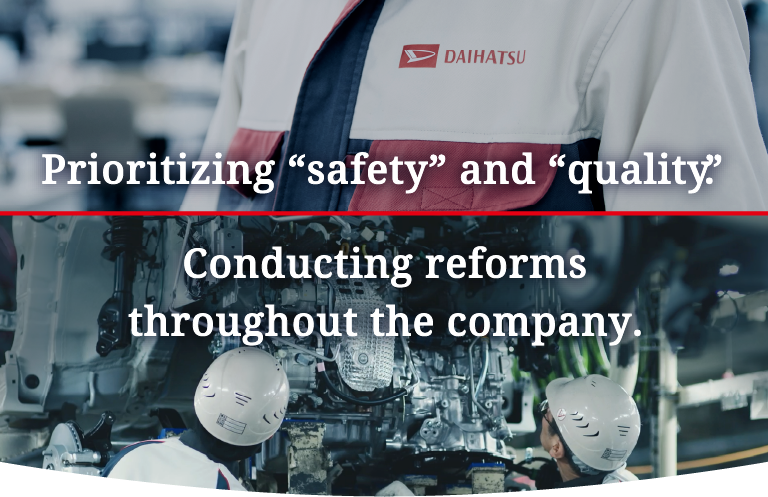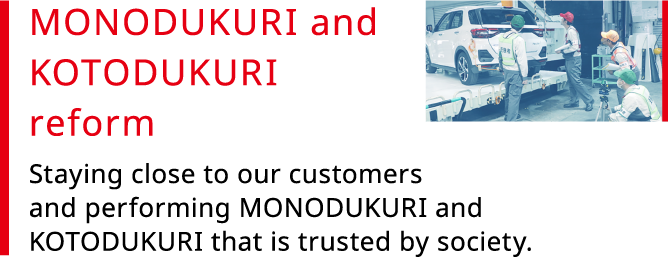
![As small cars are indispensable to our daily lives, we will continue to provide cars that our customers can drive with peace of mind, prioritizing “safety” and “quality.” To this end, we will conduct reforms by thoroughly reviewing proper car manufacturing and work procedures, as well as the corporate culture that supports them. Staying close to our customers and enriching their lives. Daihatsu will continue to face each region and each customer with sincerity and support their lifestyles. [Committed to Compliance and Earning Your Trust] Our company engaged in misconduct during the certification process.As one team, we are continuously implementing preventive measures based on the 'Three Pledges' to prevent recurrence.We prioritize strict compliance with laws and regulations in all our business activities, including regulatory certification.By delivering high-quality, safe, and reliable vehicles, we strive to be a company trusted by our customers and society. Masahiro Inoue, President](assets/img/01_img_02_small.svg)


-
● Reviewing procedures for development
and certification work- Ensuring an appropriate development schedule
- Separating development and certification schedules
-
● Establishing rules for development
and certification work- Revising and clarifying responsibilities
within internal regulations - Setting rules for proper certification tests
- Revising and clarifying responsibilities
-
● Preventing improper rewriting

-
● Ensuring the necessary personnel
for certification tests -
● Improving the understanding of
regulations and
certifications and
fostering a sense of ethics- Educating all employees on regulations and certifications
Continuously checking and becoming proficient with certification tests - Re-educating employees on ethics
- Educating all employees on regulations and certifications
-
● Strengthening a checking system
for the certification process


-
● Conducting training on regulations,
certification processes, and compliance - ● Reinforcing internal audit systems
-
● Clarification of who holds responsibility
and authority in
development work
and legal certification work -
●
Establishing the “Three Pledges” and
Reform Advancement Division
to follow up on the implementation
and
continuation of measures
to prevent recurrence -
●
Continuing review of the certification procedural irregularities
and working to prevent recurrence

Procedural irregularities related to applications
for type designation were discovered in 64 models
and three engines of Daihatsu brand vehicles
and OEM vehicles supplied to other companies.
We believe that the following are the causes
behind these procedure irregularities,
which occurred against a background of
increasing amounts of vehicle models produced
and target countries and regions
in recent years on the one hand,
and our inability to respond appropriately
due to a lack of resources on the other.














